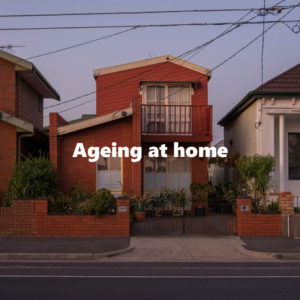It’s one thing to talk about what it takes to age in place or normalising the ageing-in-place concept on a community level. But what do we need to actually make it happen?
Here’s what we can experiment with as individuals to age-in-place to ensure we have the access we need.
Make use of human-centred design
Cost, risk and testing assumptions need a careful guiding hand, especially when looking at everything from architecture to placemaking, policy to procedure, and community engagement. And we find a helpful one in human-centred design.
These elements can come from adopting human-centred design principles and encouraging their usage on the individual, organisational, and town planning levels.
Human-centred design is a splendid companion to person-centred care because it is:
- Person-centred: Ideas and solutions are built considering the people and their environment at the centre of the define, design, develop and maintenance cycles
- Problem solving: It’s about identifying and solving root problems by understanding and addressing the underlying causes while also building things directed by community need
- Whole picture thinking: Human-centred design views all things as interconnected and views everything as a system of interconnected parts. For example, childcare next to eldercare facilities helps children learn from adult mentors while providing older Australians with youthful social interaction rather than viewing it as two groups with separate or conflicting needs
- Small, low barrier interventions: Taking an iterative approach that builds on incremental growth and change to manage expectations and lower risks. It’s about testing small, simple interventions to learn and improving gradually to ensure they meet the needs of the people while lowering risk and testing assumptions quickly
If we can adopt this framework, perhaps we can challenge ideas as we live and work. We can experiment with what we need on a grassroots level. And use the knowledge we gain from short launches and small tests to inform the bigger picture.
How could we apply human-centred design to ageing-in-place as individuals?
- Working bees and helping neighbour-to-neighbour. Consider the seasonal challenges we face when providing aged care and plan to engage with the community ahead of time to help prepare for heat or cold waves, bushfire season tree trimming, autumn leaf cleaning gutters and so on
- Promote sharing at a street level. Create food pantries like street libraries to help offset the cost of inflation and create awareness within the community through making poverty, especially among our elderly, visible
- Hold community meetings and get buy-in. Ask people about the challenges they are facing both as older Australians looking to age-in-place and as members of the community looking to make it happen
- Create community-led initiatives and programs. Give people the skills and access to what they need that normalises ageing-in-place to the point where local areas adopt it as part of the benefits. In the same way people might look for a good school district, let’s advocate for safe, welcoming ageing neighbourhoods
Normalise looking after each other

Photo by Cameron Tidy on Unsplash
As a nation, Australia has spent a little too much time advocating for the individual. This has meant we don’t know our neighbours as much as we probably should. We’re also big fans of showing off our cynicism while promoting exclusion. These sorts of attitudes create issues for looking after community, especially when we’re ageing and dying. With the reduction in how many children are born to each family, we need to mature in our attitudes and stop advocating for the loner.
Teaching people how to create networks, communities – and then onto care trees of support, regardless of a personal connection, helps create better support. It also translates into greater community support as people age, birth children, got through illness, experience mental illness, or in life generally.
On a community level and individual level, how we do this is:
- Promote the value of looking after each other and what it leads to
- Normalise community gardens, volunteerism, using local meetings places like clubs and halls, and other activities that remind neighbourhoods that community has value
- Discourage the cynicism and the misanthropic messages that permeate culture. Including de-platforming angry voices that seek to divide us
- Introduce and benefit from crowd-based principles such as crowdfunding to pay for programs or initiatives, crowdsourcing for opinion gathering, and collaborative consumption such as tool sheds or sharing skills, to promote the power of people coming together
- Make it cool. Have leaders that inspire others to adopt community-centred thinking
- Highlight the benefits of diversity and intergenerational connectivity. Demonstrate the value added to society when we learn from other people and cultures, age groups, and experiences
Ageing-in-place happens when we:
- Make a commitment to show where the resources are – and the gaps. That way, public ventures and community groups can fill the gaps and connect the dots
- Start viewing ageing-in-place as something we should all have access to. Not only because it is commercially viable or something that groups that share the same moral code can enjoy
- Make small steps towards giving people a voice and a platform for that voice to make meaningful change
- Ask for accessibility and other services that help us age-in-place before we need them to ensure access is there for everyone in the present and future
- A set of goals we can all get behind on a community or neighbourhood level






